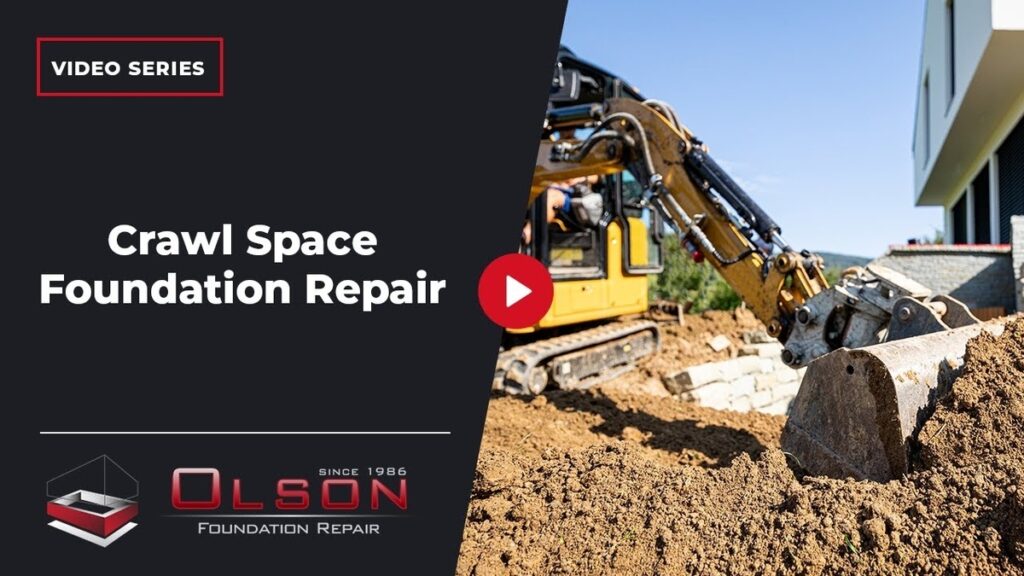It is known that expansive clay soil in Kansas City changes and moves over time. This movement can press against your house foundation, causing cracks, curved or irregular floors. This is why choosing the right foundation type is so important when creating or buying a house here.
What Are the Most Common House Foundation Types?
1. Poured Concrete Foundations
These are solid walls made by pouring concrete into forms. Once the concrete cures, it becomes a single, strong structure. Most modern homes in Kansas City are built with poured foundations.
Benefits of poured concrete:
- Strong and long-lasting
- Resists water better than blocks or stone
- Easy to seal and waterproof
- Handles soil pressure better than other types
Drawbacks:
- Can crack with extreme soil movement
- More expensive than block or stone
Pro Tip: If you have a poured wall foundation, watch for long vertical cracks. These can signal pressure from the shifting clay soil.
2. Concrete Block (Cinder Block) Foundations
Block foundations are made from stacked concrete blocks, often 8 inches wide. You’ll find them in many homes built in the mid-to-late 1900s.
Benefits of block walls:
- Affordable to install
- Easier to build in sections
- Can support a wide range of home sizes
Drawbacks:
- Mortar joints can weaken over time
- More prone to bowing or bulging from soil pressure
- Water can seep through joints if not sealed
If your block walls are leaning or cracked, it may be due to Kansas City’s expansive soil pressing against them. This is a common problem we see with this foundation type.
How Do Stone Foundations Hold Up?
3. Old Stone Foundations
These are found in historic houses, especially those built for over 100 years. The stone walls are usually about 2 feet thick and made of stacked stones and mortar.
Advantages of stone:
- Classic and historic charm
- Very thick and strong in many cases
- Built to last when properly maintained
Challenges:
- Mortar can deteriorate over time
- Poor insulation compared to modern foundations
- Difficult to waterproof
Some homeowners love the look and feel of stone foundations. They give a home real character. But if repairs are needed, they can be harder to work with.
Need expert help with the foundation of the house? Contact Olson for a free consultation. We can inspect your base, explain your current condition, and help you plan the best way forward, whether repair or complete reconstruction
Which Foundation Type Is Best for Kansas City Homes?
Each type has its own strengths and, in Kansas City, the soil plays an important role in the way each one presents itself. With the clay soil, the spilled concrete tends to be the most stable option.
Key Takeaway: Poured concrete walls offer the best resistance to soil movement. Block and stone can work too, but they often need more care over time.
Choosing Based on Home Age and Style
What foundation type do older homes have?
- Pre-1920s homes usually have stone walls.
- 1940s–1970s homes often used block foundations.
- Newer homes mostly use poured concrete.
If you’re buying an older home in Kansas City, it’s smart to get the foundation checked. Age, wear, and shifting soil can create hidden problems.
How do you know what foundation your home has?
- Look at the basement walls
- Poured concrete looks smooth with few seams
- Block walls have a brick-like pattern
- Stone foundations look irregular and rough
In Summary
There are three types of foundation of the main house in Kansas City: poured concrete, concrete block, and stone. Each has its pros and cons, especially when dealing with the change of clay soil. We always recommend an inspection to know exactly what you are working on.
Need a foundation check? Contact Olson today for expert advice and honest guidance. We’ll make sure your foundation is safe, solid, and ready to last.




